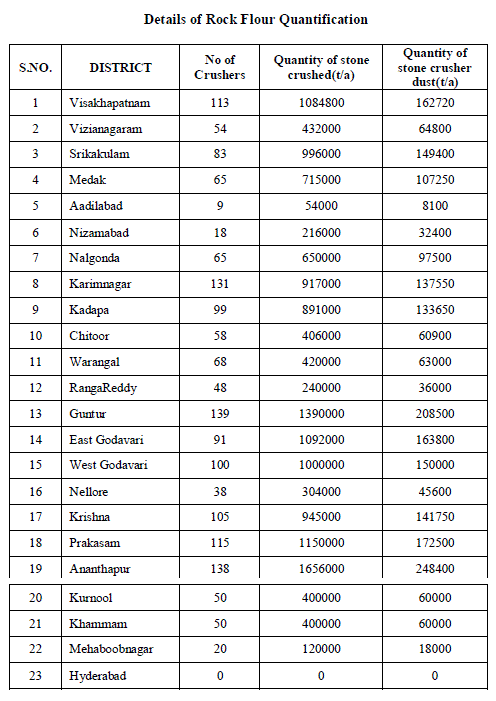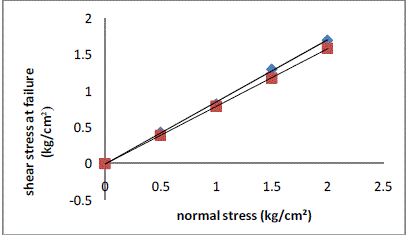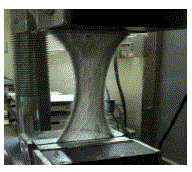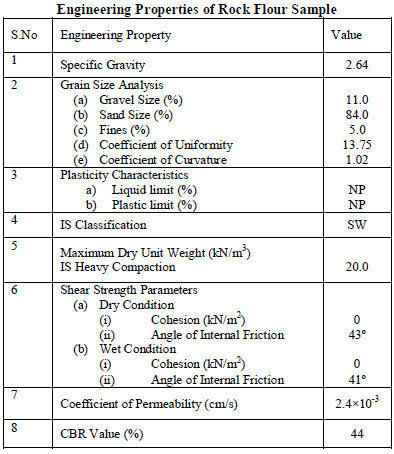ISSN ONLINE(2319-8753)PRINT(2347-6710)
ISSN ONLINE(2319-8753)PRINT(2347-6710)
S.V. Garata Reddy1, K.Chinnapa Reddy1 and C.N.V. Satyanarayana Reddy2
|
| Related article at Pubmed, Scholar Google |
Visit for more related articles at International Journal of Innovative Research in Science, Engineering and Technology
The flyover constructions have seen a revolutionary change ever since reinforced earth walls have emerged and replaced the conventional retaining walls. The approaches sections of flyovers are now being connected with reinforce earth retaining walls due to fast constructions, low cost and better seismic resistance. The major component of the reinforced earth retaining wall in frictional fill and so cost of the fill influences cost of the wall. The construction cost of reinforced earth walls can be significantly reduced if alternate cost effective materials are used in place of conventional fill material, i.e. sand and gravelly soils. The process of assessing any alternate cost effective material such as a waste, it is essential to have knowledge on requirements of fill for use in reinforced soil structures and methods of evaluation of frictional characteristics of the fill with reinforcing materials. So in the present work besides explaining concept of reinforced earth, requirements of fill material to satisfactory for using in reinforced soil constructions and tests for evaluate of interfacial frictional parameters of fill and reinforcement have been reviewed. In the present study rock flour, waste material produced from granite rock crushing plant is assessed for its suitability as fill material in reinforced soil constructions. The study is extended to study the interfacial friction characteristics of rock flour with synthetic geotextiles from modified direct shear tests. The results have been compared with respect to river sand and rock flour of Leptynite origin. The results of study indicated better interaction in comparison to river sand and rock flour of Leptynite origin. Rock flour of granite origin mobilized friction coefficients of 0.84 & 0.79 in OMC & MDD condition and 0.79 & 0.75 in wet condition with woven and non woven geotextiles respectively.
Keywords |
| Rock Flour, Fill Material, Geotextiles, Reinforced Soil Structures. |
INTRODUCTION |
| Reinforced earth technique has gained much popularity in construction of various civil engineering structures. The constructions of any reinforced soil structure involves use of soil or fill material, reinforcing material and facing. The success of the technology mainly depends on the type of fill material and its interaction with the reinforcing material that is being used. Granular soils are preferred in construction of reinforced soil structures over clays and silts as they exhibit higher values of friction coefficients with reinforcing materials and do not show considerable reduction in the friction coefficient value in presence of moisture. The frictional fills, called as granular fills, are defined as good quality, well-graded, non-corrosive cohesionless material possessing good frictional characteristics. It is advantageous and economical if some locally available granular waste material is found suitable for use as fill material in reinforced earth construction. |
LITERATURE REVIEW ON ROCK FLOUR |
| Shankar and Ali (1992) have studied engineering properties of rock flour and reported that the rock flour can be used as alternative material in place of sand in concrete based on grain size data. |
| Kanakasabai and Rajashekaran (1992) investigated the potential of ceramic aggregate can be used to produced lightweight concrete, without affecting strength. Further, Rao et al (1996) has reported that sand can be replaced fully with rock flour. However, a slight loss in Workability has been noticed with increase in replacement of sand by rock flour. |
| Nagaraj and Bhanu (1996) have studied the effect of rock dust and pebble as aggregate in cement and concrete. It has been reported that crushed stone dust can be used to replace the natural sand in concrete. |
| Rao and Andal (1996) also have reported that sand can be replaced fully by rock flour without much loss of workability. Nearly 20% of rock is converted into rock flour while crushing rock into aggregate at stone crushing plants. Rock flour can be used as fine aggregate in place of conventional river sand, in concrete. Use of rock flour as fine aggregate in concrete results in increase of compressive strength, split tensile strength and modulus of rupture. Rock flour can be advantageously used in construction of reinforced soil construction such as reinforced earth retaining walls, reinforced soil beds and reinforced flexible pavements as a fill material due to its stability, free draining nature and good frictional characteristics with synthetic reinforcement. |
| Ilangovan and Nagamani (1996) reported that Natural Sand with Quarry Dust as full replacement in concrete as possible with proper treatment of Quarry Dust before utilization. |
| SatyanarayanaReddy and Moorthy (2002) reported that Potential of Rock Flour for Use in Reinforced Soil Construction, Journal of Southeast Asian Geotechnical Society, Vol.88, pp.47-50. |
| Sahu, et al. (2003) has reported that sand can be replaced by rock flour up to 40% without affecting strength and workability. |
| Satyanarayana Reddy and Veera Reddy (2007) have studied on Use of Rock Flour and Insulator Ceramic Scrap in Concrete. |
Details of Rock Flour Quantification |
 |
 |
MATERIALS AND METHODOLOGY |
A. Rock Flour |
| The rock flour for the study has been collected from a quarry located at Kurnool. |
| The quantity of rock flour present in the state of Andhra Pradesh is estimated by gathering information from quarries located across the state. |
| Extensive laboratory investigations namely grain size analysis, atterberg limit tests, I.S heavy compaction test, direct shear test, permeability and CBR tests are proposed to characteristics the rock flour. The effect of saturation of shear parameters is also included in the study. |
B. Geotextiles |
| Woven and non woven Geotextiles selected for the study has been characteristics by performing tests on physical properties and mechanical properties, particularly strengths. The tests include determination of weight, thickness, compressibility and wide width tension test. |
C. Assessment of Rock Flour as Fill Material in Reinforced Soil Constructions |
| Based on the established engineering properties of rock flour its suitability for use as fill in reinforced soil constructions by compares its properties to requirements of fill material given below. |
Requirements of Frictional Fill (Jones, 1985) |
 |
EXPERIMENTAL WORK |
ENGINEERING PROPERTIES OF ROCK FLOUR |
| The rock flour has been collected from rock crushing plant located at Kurnool. Extensive laboratory investigations have been carried out on the rock flour samples to obtain engineering properties. The details of tests are given below. |
| (i) Specific Gravity |
| The Specific Gravity test is carried out on the rock flour samples by using Pycnometer according to IS: 2720- part ÃÂÃâ - 1980. |
| (ii) Grain Size Analysis |
| The Grain size distribution is carried out by conducting Sieve Analysis. The analysis is carried out according to IS: 1498-1970. |
| (iii) Compaction Test |
| IS heavy compaction test is conducted as per IS: 2720- part VÃÂÃâ ÃÂÃâ I on the different rock flour samples. |
| ( iv) Direct Shear Test |
| The tests are conducted in OMC and MDD Condition and also in wet condition on different rock flour samples to evaluate the shear parameters cohesion and the angle of internal friction. |
 |
| The properties of rock flour presented in Table indicate that it is well graded coarse grained non-plastic material. The rock flour has reasonably good permeability and good frictional characteristics. Hence rock flour is suitable for use as fill material in reinforced soil constructions, back fills behind retaining walls and construction of embankments etc. |
Properties of Woven and Non Woven Geotextiles |
| Extensive laboratory investigations are carried out to evaluate the properties of Woven and Non-Woven Geotextile used in the study. The results are tabulated below. |
 |
Evaluation of Friction Coefficient |
| The coefficient of friction depends on the materials used. Coefficients of friction range from near zero to greater than one under good conditions. The coefficient of friction is an empirical measurement. It has to be measured experimentally, and cannot be found through calculations. Rougher surfaces tend to have higher friction coefficient values. |
| In frictional fills, the friction coefficient is given as the tangent of interfacial angle, Øμ between soil and reinforcement. |
| f = tan Øμ, |
| Where, f is independent of Normal Stress. |
| The friction coefficient of rock flour with geotextiles are tabulated in Table |
 |
RESULTS AND DISCUSSION |
| Engineering properties of rock flour presented in table indicate that the rock flour is a non plastic coarse grained material. Further from the values of coefficient of uniformity (Cu) and coefficient of curvature (Cc), it is classified as well graded sand (SW) as per Indian Standard Soil Classification System (ISSCS) since % fines is 5. The results of the compaction tests on rock flour indicate that the optimum moisture content is 9.0 % and the respective maximum dry density is 2.0 g/cc |
| The rock flour samples exhibited good fictional characteristics in OMC & MDD condition (∅ = 430) and also in wet condition (∅ = 410). The rock flour has fines content as 5 percent (<15), uniformity coefficient is 13.8 (>5) and angle of internal friction 410 (>250). Hence it satisfies the requirements of fill material mentioned in materials and methodology section. Hence rock flour is suitable as fill material in reinforced soil structures based on its properties. |
| The results of permeability tests on rock flour presented in Table it is observed that the material has good drainage with the coefficient of permeability is 2.4×10-3 cm/s. The load penetration curve present in Figure 4.5 it reveals that the rock flour has a CBR value of 44% in heavy compacted state under soaked condition. |
| The modified direct shear test results indicate that rock flour samples exhibited higher values of interfacial friction angles with woven geotextiles (Ø in OMC & MDD condition is 40° and in wet condition is 38°) and non-woven geotextiles (Ø in OMC & MDD condition is 38° and in wet condition is 37°) in OMC and MDD condition and also in wet condition. Woven geotextiles exhibited high interfacial frictional angles in OMC & MDD and wet condition compared to the non-woven geotextiles because of their higher stiffness and roughness. |
| it can be observed that rock flour exhibited higher values of mobilized friction angles with geotextiles. The internal friction angles are about 0.88 to 0.93 times the angle of internal friction of rock flour. Based on the earlier work done by Makiuchi and Miyamori (1988), it is reported that sand mobilizes interfacial friction angles only to the extent of 0.75 to 0.9 times angle of internal friction of sand. Hence it can be concluded that rock flour has better frictional characteristics over sand and so it can be advantageously used to replace sand as fill material in the Reinforced Soil Constructions. |
CONCLUSIONS |
| The equivalent IS classification symbol for rock flour under study is well graded sand. |
| The rock flour is coarse grained material with more sand size particles with good frictional and drainage characteristics (k = 2.4×10-3 cm/s). |
| Rock flour has higher value angle of internal friction (Φwet = 41°) compared to coarse sand. |
| Rock flour satisfies the requirements of frictional fill used in construction of reinforced soil structures. |
| Rock flour mobilizes 88 to 93 % of angle of internal friction as interfacial friction angle with geotextiles. |
| The frictional coefficient mobilized by rock flour with woven geotextile is relatively more than that of non-woven geotextile. |
| The friction coefficient reduced by 7.0 percent from OMC and MDD state to wet condition in respect of a woven geotextiles where as the friction coefficient reduced by 3.5 percentage from OMC and MDD state to wet Condition in case of non woven geotextiles. This is attributed to higher thickness, more water retaining ability and compressibility of non woven geotextiles. |
| The rock flour of granite origin mobilized higher frictional characteristics (about15%) compared to rock flour of Leptynite origin. |
| The friction coefficients mobilized by rock flour with geotextiles is higher than that mobilized by sand (about 10 - 20%). |
| Apart from improving the quality of reinforced soil construction, the construction cost can be reduced since rock flour is available at low cost. |
| Hence Rock flour can be effectively utilized as fill material in construction of Reinforced Earth Structures such as Reinforced Earth Retaining Wall, Reinforced Soil Bed, and Reinforced Embankments. |
References |
|